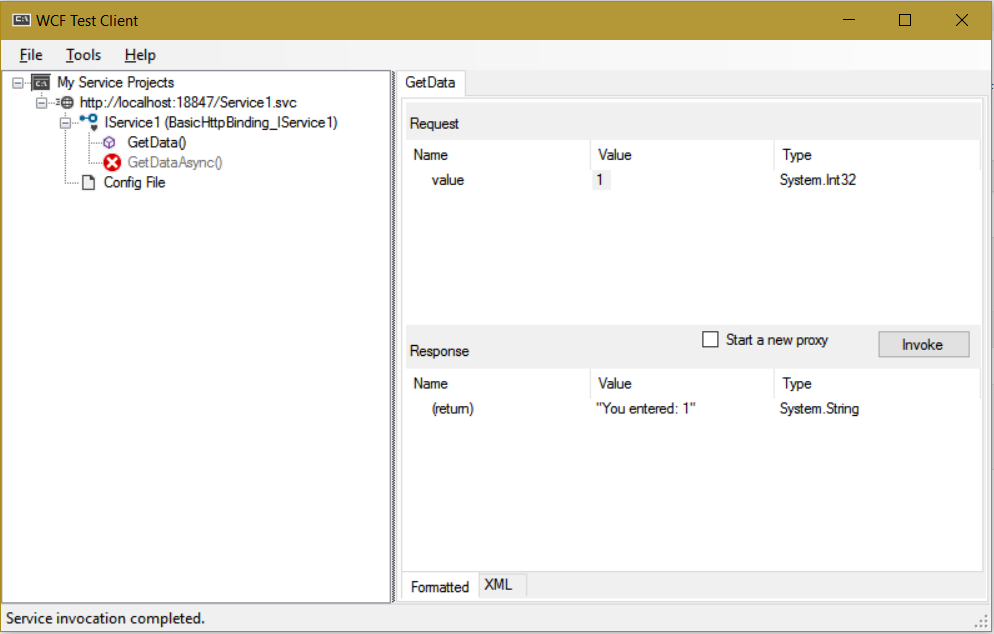Consider a WCF service that returns some text that you entered. The service has a contract called IService1 and an operation called GetData. When we run the service in our test client, we see:

The code for this is:
using System;
using System.Collections.Generic;
using System.Linq;
using System.Runtime.Serialization;
using System.ServiceModel;
using System.ServiceModel.Web;
using System.Text;
namespace Carl.TestWCF
{
[ServiceContract]
public interface IService1
{
[OperationContract]
string GetData(int value);
}
}
Let’s say we want the service and operation to be different to what the WCF consumer will see. In order to do this, we decorate our methods below with:
using System;
using System.Collections.Generic;
using System.Linq;
using System.Runtime.Serialization;
using System.ServiceModel;
using System.ServiceModel.Web;
using System.Text;
namespace Carl.TestWCF
{
[ServiceContract(Name = "Return What Was Entered")]
public interface IService1
{
[OperationContract(Name ="Do The Returning")]
string GetData(int value);
}
}
When we run our test client now, we can see the names have changed:

I AM SPENDING MORE TIME THESE DAYS CREATING YOUTUBE VIDEOS TO HELP PEOPLE LEARN THE MICROSOFT POWER PLATFORM.
IF YOU WOULD LIKE TO SEE HOW I BUILD APPS, OR FIND SOMETHING USEFUL READING MY BLOG, I WOULD REALLY APPRECIATE YOU SUBSCRIBING TO MY YOUTUBE CHANNEL.
THANK YOU, AND LET'S KEEP LEARNING TOGETHER.
CARL



